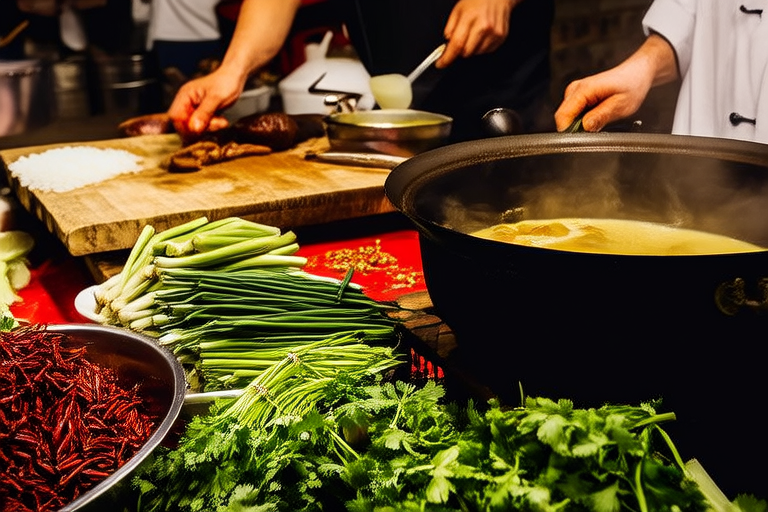From Market to Table: Exploring Local Delights Around the Globe

From Market to Table: Exploring Local Delights Around the Globe
The bustling streets of a local market are often the heart of a community, where generations of families have gathered to buy, sell, and share stories. These vibrant hubs not only supply the freshest ingredients but also preserve cultural heritage and provide authentic dining experiences. For travelers, visiting local markets offers a unique opportunity to immerse themselves in the local culture, taste traditional dishes, and learn about the history and traditions behind them. From the colorful stalls of Marrakech to the aromatic spice markets of India, each market tells its own story through its produce, spices, and the people who sell them.
The Role of Local Markets in Preserving Cultural Heritage
Local markets are more than just places to shop; they are living museums that showcase the culinary diversity of a region. They serve as a repository of knowledge, passed down through generations, ensuring that traditional recipes and cooking techniques are preserved. By supporting local vendors and artisans, travelers contribute to the preservation of these invaluable traditions. Moreover, local markets offer an unparalleled opportunity to witness the preparation and consumption of regional dishes, providing insight into the cultural significance of food.
Marrakech, Morocco: A Feast for the Senses
Walking through the souks of Marrakech, one is immediately enveloped in a symphony of colors, smells, and sounds. The Jemaa el-Fnaa square is the epicenter of this sensory experience, where vendors sell everything from fresh fruits and vegetables to handcrafted leather goods. The market is alive with the aroma of sizzling tagines and freshly baked bread, making it impossible to resist sampling some of the local delicacies.
Signature dishes in Marrakech include harira, a hearty soup made with lentils, tomatoes, chickpeas, and spices, traditionally served during Ramadan. Another must-try is couscous, which is steamed and served with a variety of vegetables and meats, such as lamb or chicken. The use of cumin, coriander, and saffron in these dishes reflects the rich culinary history of North Africa. Additionally, visitors can observe the intricate process of making argan oil, a key ingredient in many Moroccan dishes, and the art of crafting delicate pastries like chebakia.
Tokyo, Japan: A Symphony of Flavors
Tokyo’s markets are a testament to the city’s commitment to freshness and quality. The Tsukiji Outer Market is one of the largest and most famous fish markets in the world, where buyers and sellers haggle over the best catches of the day. The market is also home to numerous sushi bars, offering an array of seafood options, from tuna to eel. In addition to fish, the market sells fresh produce, including seasonal fruits and vegetables, as well as handmade crafts and souvenirs.
One of the most iconic dishes in Tokyo is sushi, particularly the type prepared at Tsukiji. The city is also known for its tempura, battered and fried vegetables and seafood, which showcases the delicate balance of flavors and textures. Another local favorite is tonkatsu, a breaded and deep-fried pork cutlet, often served with shredded cabbage and a sweet and savory sauce. These dishes exemplify the Japanese emphasis on presentation and precision in food preparation, reflecting the country’s respect for tradition and aesthetics.
Bangkok, Thailand: A Culinary Adventure
Bangkok’s markets are a paradise for food lovers, offering a wide range of street foods and fresh ingredients. Chatuchak Weekend Market is the largest outdoor market in Asia, where visitors can find everything from clothing to antiques, but it’s the food stalls that draw the most attention. The market is filled with vendors selling pad thai, tom yum goong, and other Thai specialties, along with fresh produce, herbs, and spices.
Thai cuisine is renowned for its balance of five flavors: sweet, sour, salty, bitter, and spicy. Dishes like green curry, made with coconut milk, green chilies, and various vegetables, exemplify this harmony. Another popular dish is massaman curry, a rich and complex curry featuring peanuts, potatoes, and beef or chicken. These dishes are often seasoned with galangal, lemongrass, and kaffir lime leaves, giving them their distinct flavor profile. Additionally, Bangkok’s markets offer an excellent opportunity to try khao pad, a simple yet delicious stir-fried rice dish, and roti sai mai, a sweet pancake filled with egg custard.
Reflections on Authenticity and Connection
Experiencing local markets and cuisines is essential for travelers seeking authentic and meaningful connections with the places they visit. By engaging with local vendors and artisans, travelers gain a deeper understanding of the cultural significance of food and its role in shaping a region’s identity. Supporting local businesses not only helps preserve culinary traditions but also fosters economic growth within communities.
In conclusion, local markets are more than just places to buy groceries; they are windows into the soul of a community. They offer travelers the chance to discover new flavors, learn about cultural practices, and connect with locals on a personal level. Whether it’s the vibrant souks of Marrakech, the bustling fish markets of Tokyo, or the lively street food stalls of Bangkok, each market provides a unique glimpse into the world of local cuisine and the people who make it special.